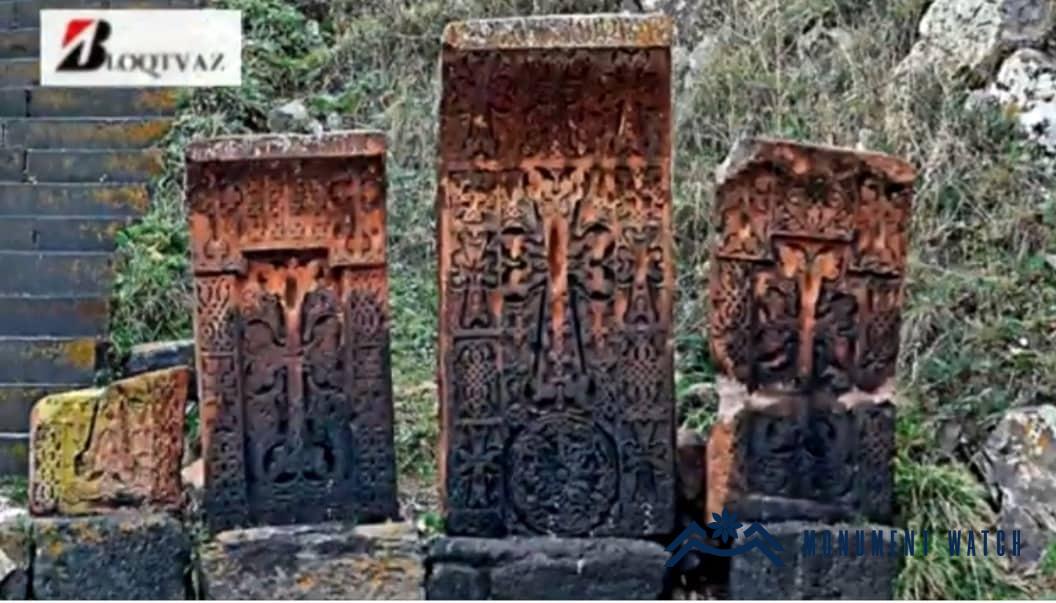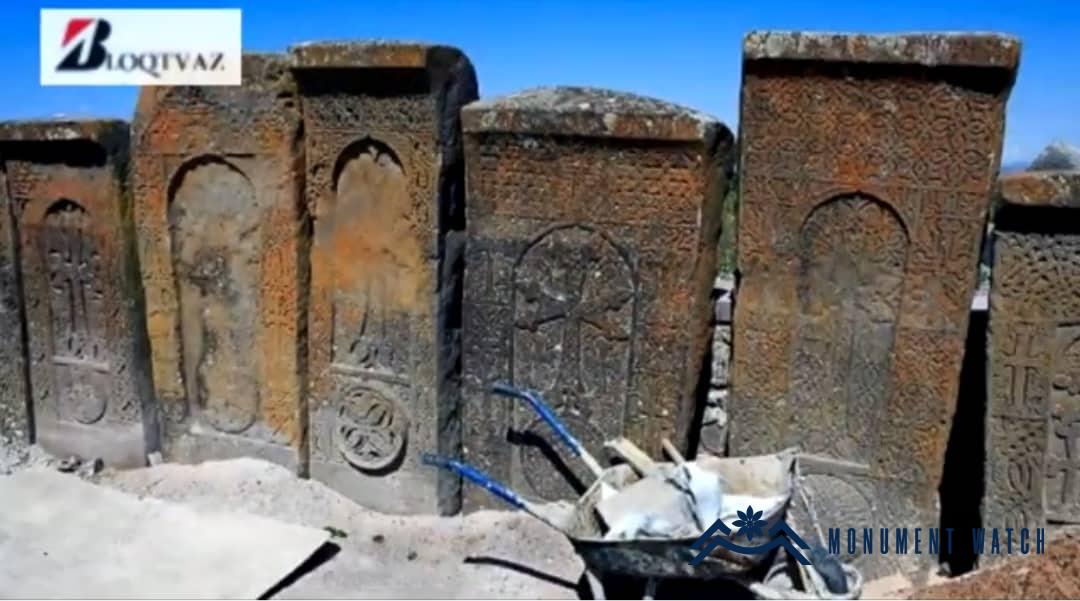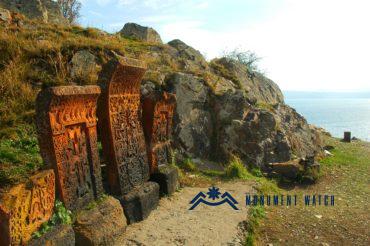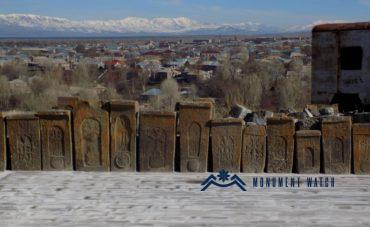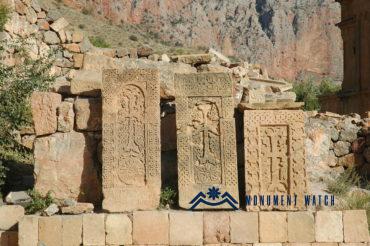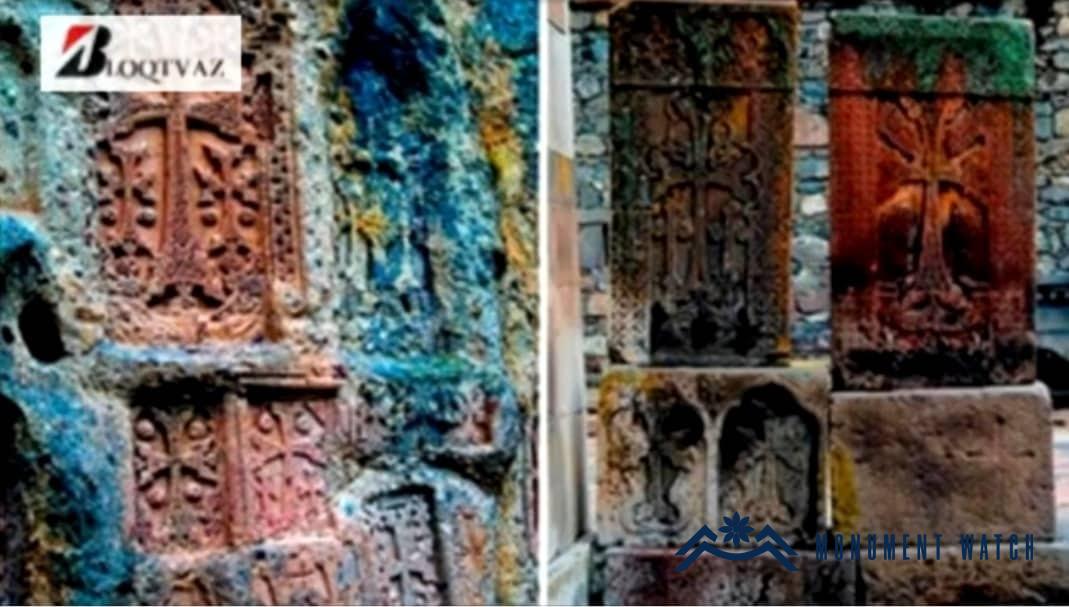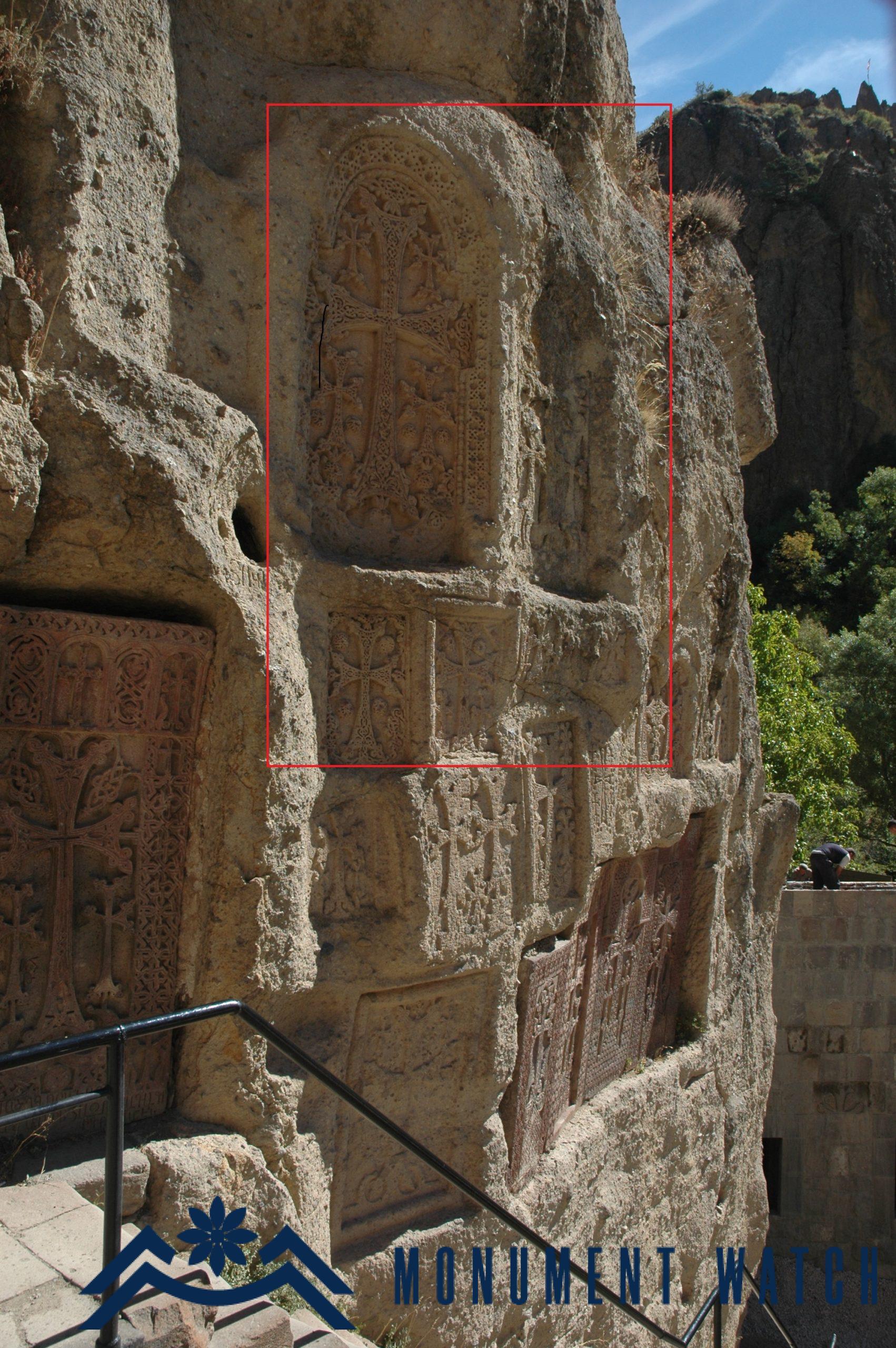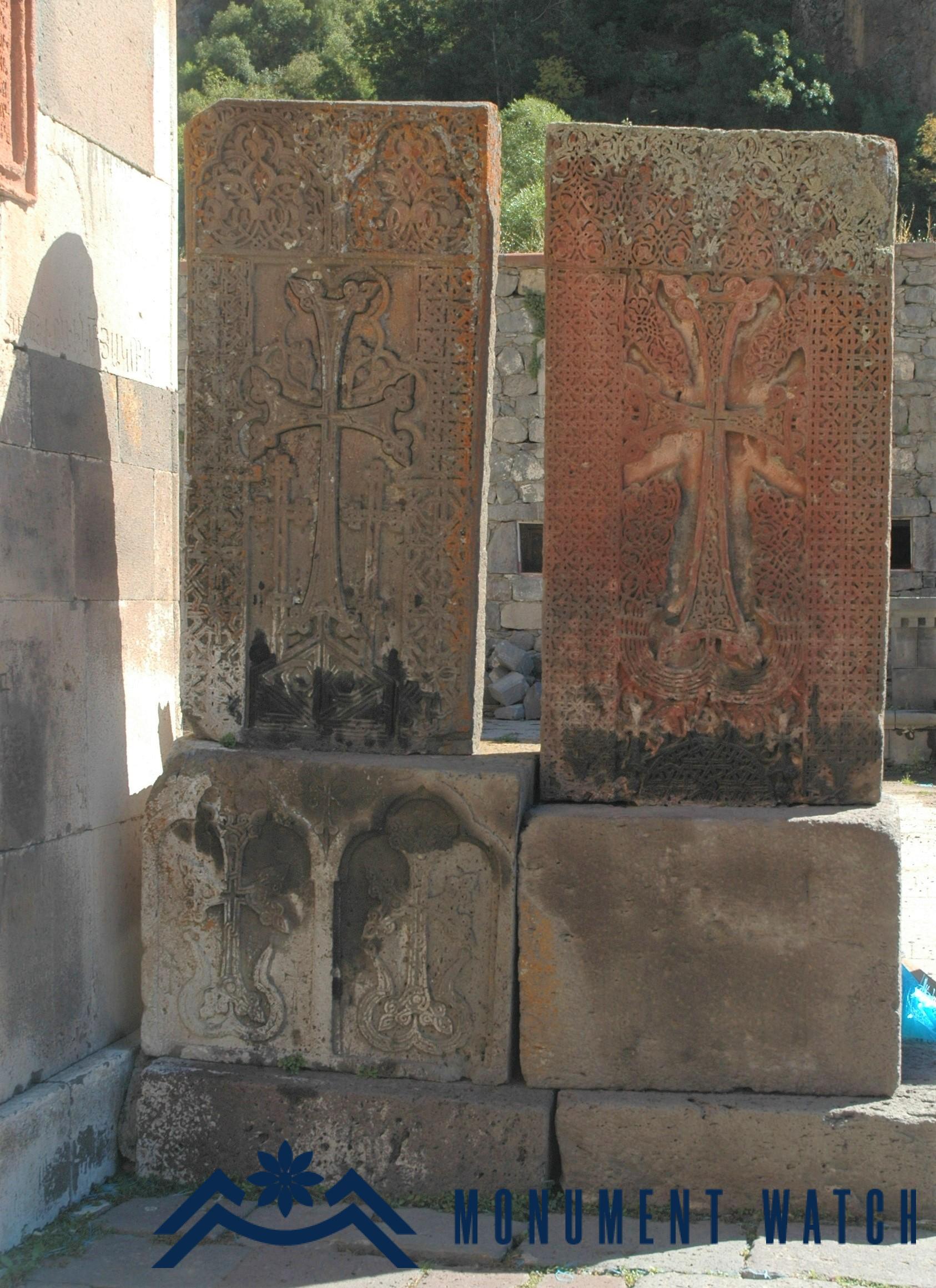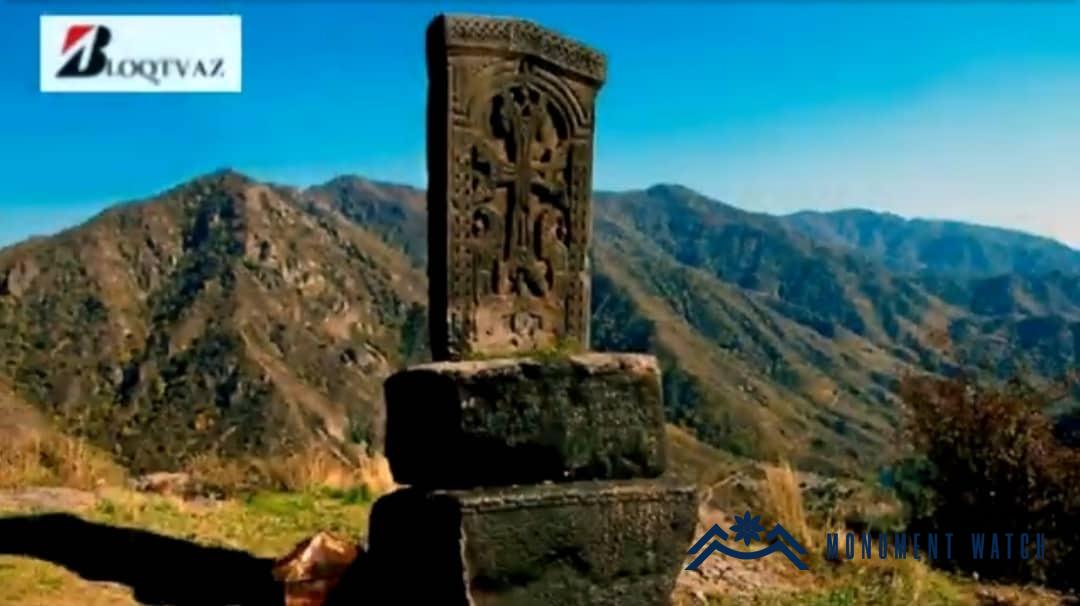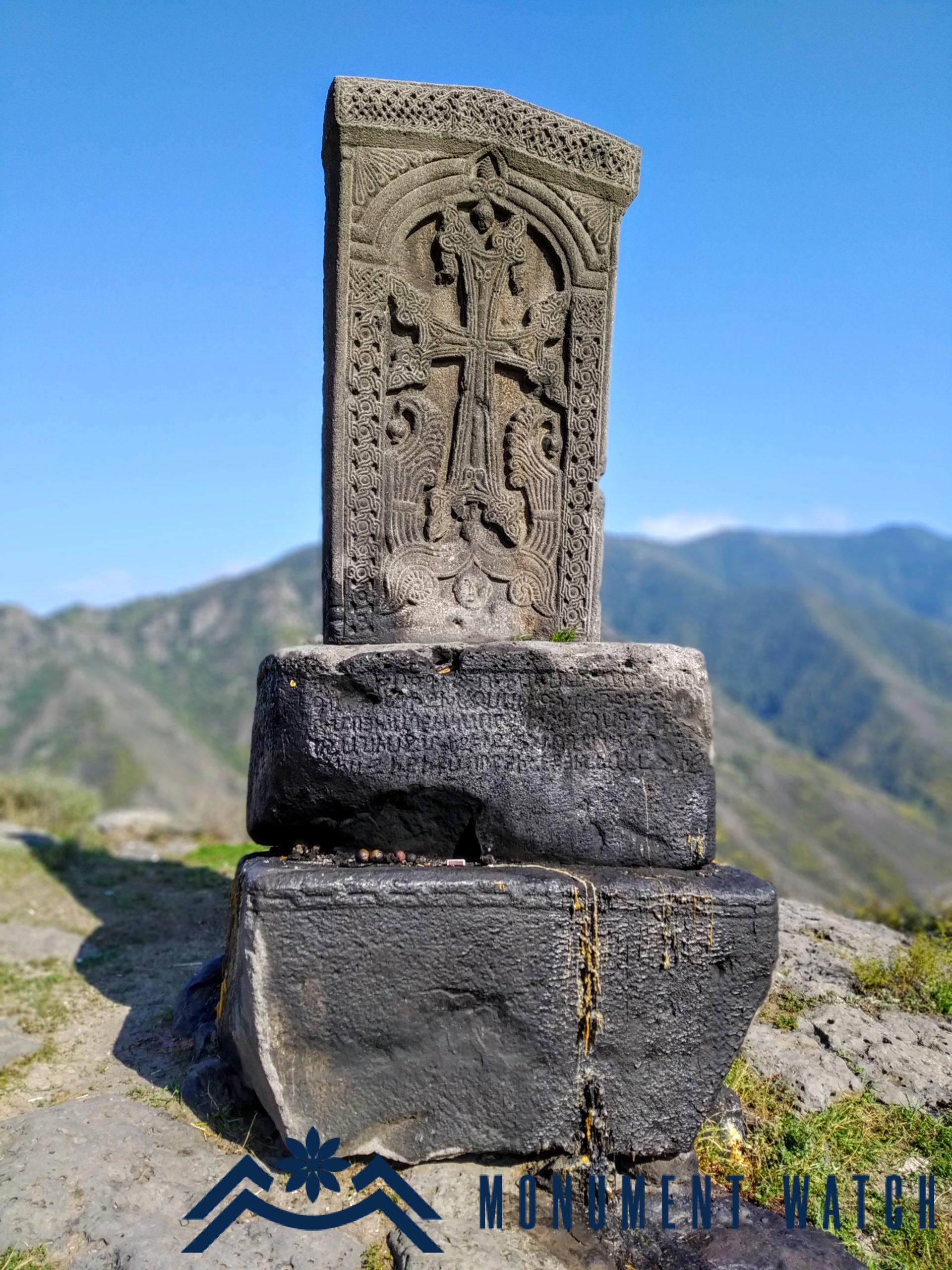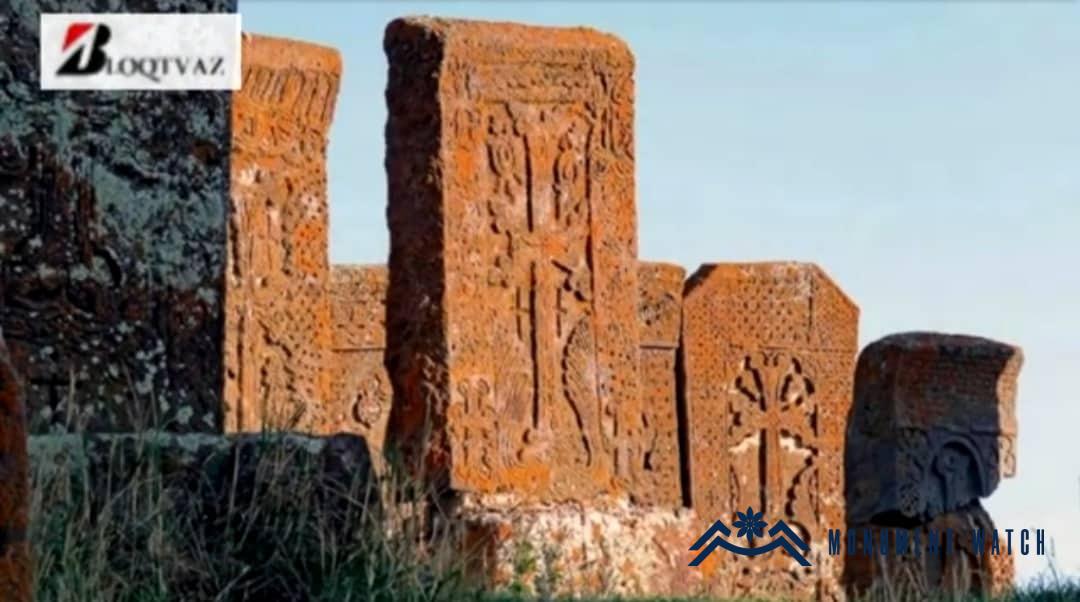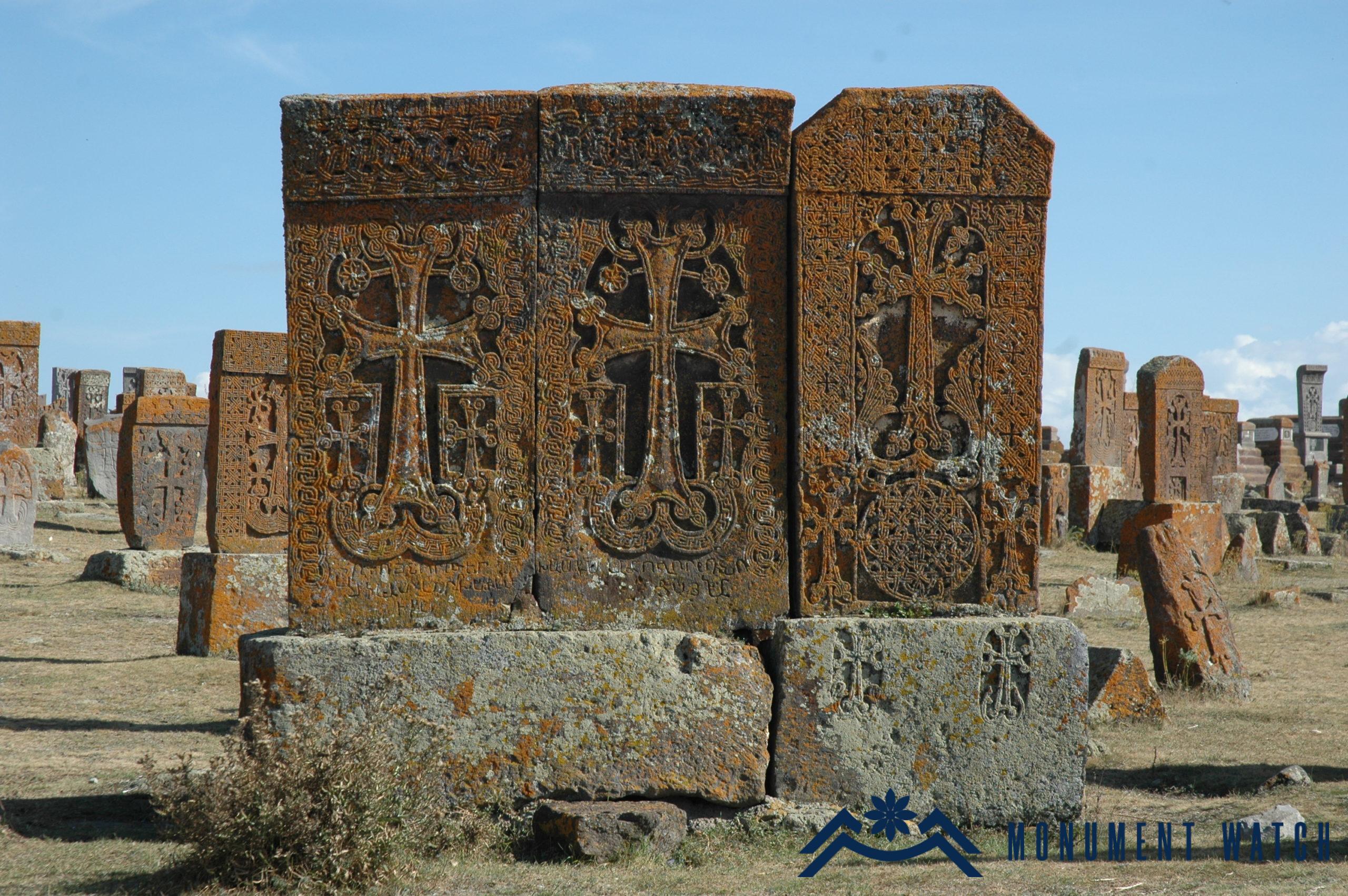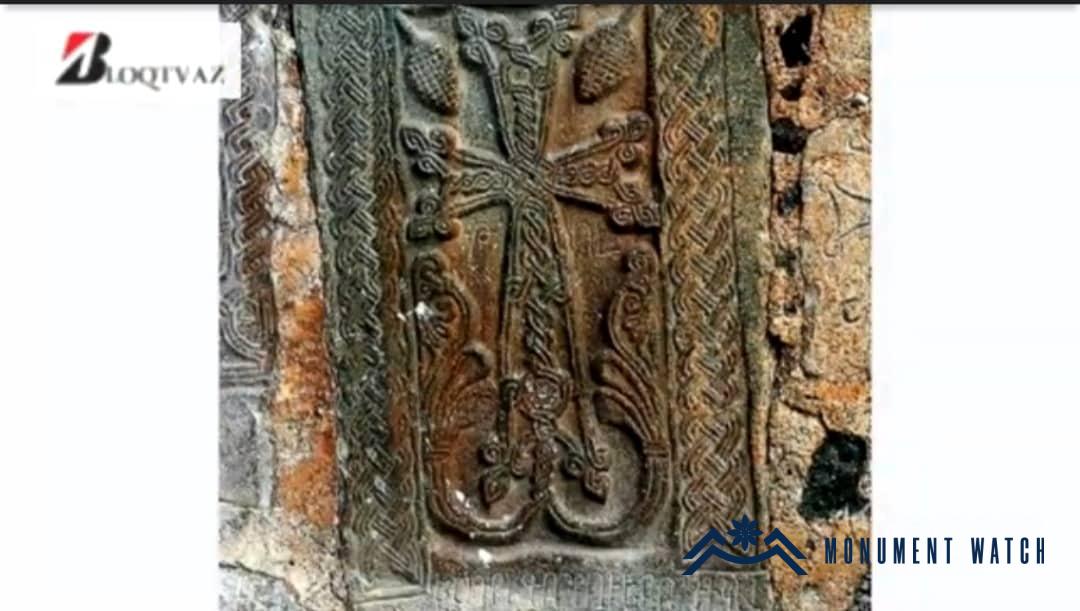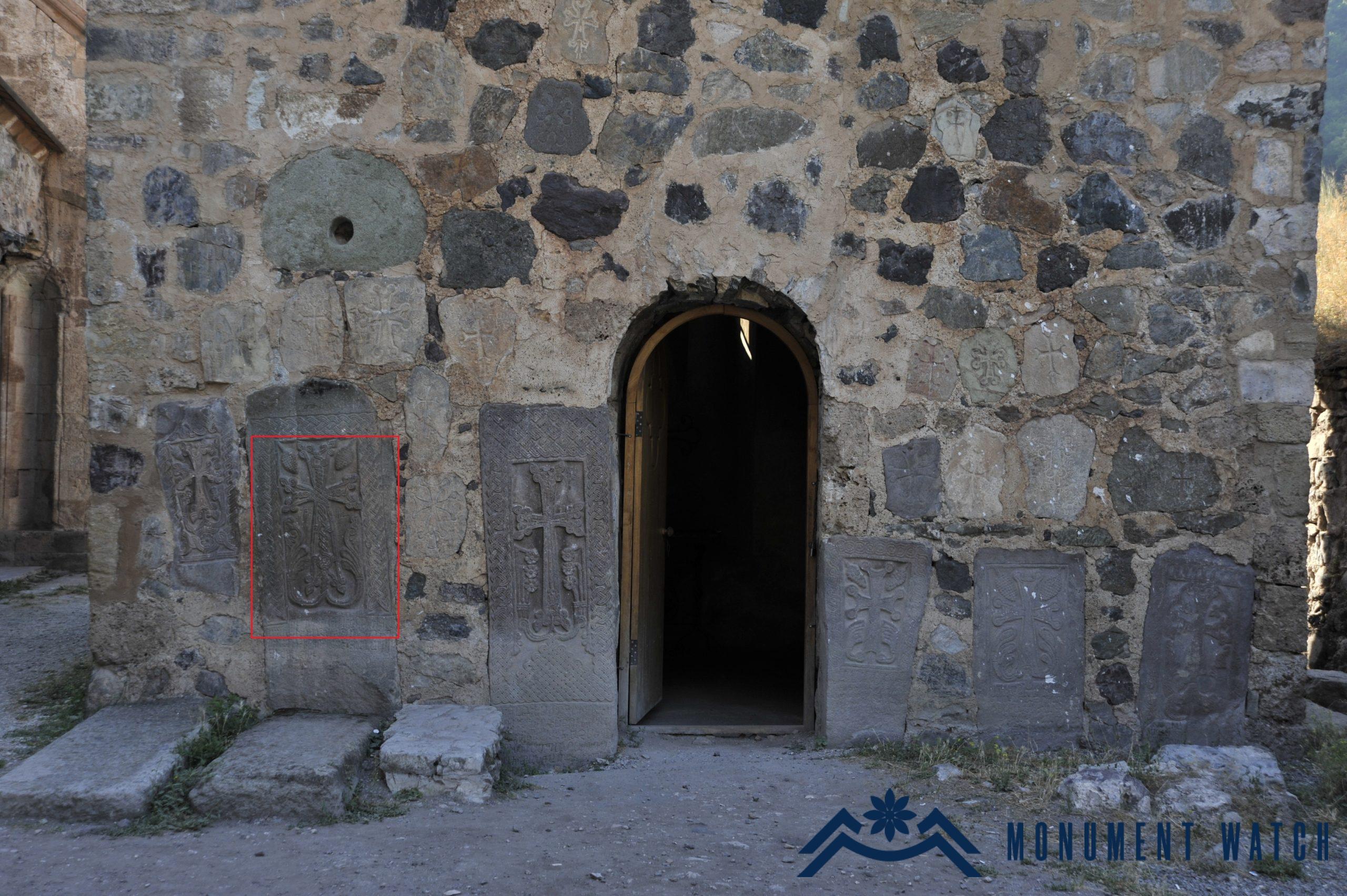Where did Azerbaijani propaganda get the photos of “aged Armenian khachkars” from? About another falsification․
On July 22, 2022, a documentary with obvious anti-Armenian propaganda overtones was shown on the Azerbaijani Russian-language CBC TV Azerbaijan channel. One of the main statements of that is following: the Armenian side allegedly had a workshop in the Karvachar region for the producing Armenian khachkars and artificial aging of those in order to Armenianize Karabakh and was engaged in the falsification of history.
Unfortunately, this absurd statement, which individuals in Azerbaijan have been trying to promote since 2021, including those who consider themselves art historians and historians, has recently begun to be aggressively promoted at the state level.
The main idea of this propaganda is that in November 2020, a workshop for “making and aging khachkars” was discovered in Karvachar region. According to the Azerbaijani side, “monitoring” of this workshop showed that Armenian craftsmen carved Armenian inscriptions, crosses and ornaments on the stones, then placed those in special solutions, such as vinegar, and aged the stones and the sculptural images carved on them. After all this, Armenians allegedly bury such stones in the ground, invite archaeologists, who excavate and present these to the public as ancient Armenian relics.
It is surprising and ironic that photographs of khachkars from various churches and monasteries of Gegharkunik region of the Republic of Armenia are mainly presented as evidence of the existence of the workshop. Usually they use photographs of khachkars placed by the steps leading to Sevanavank monastery (17th century, figs. 1, 2), khachkars of Kotavank monastery (16-17 centuries, figs. 3, 4). In some media, there are even photographs of khachkars located in the monasteries of Noravank (1277 AD, figs. 5, 6), Geghardavank (13th century, figs. 7-9), in Odzun (1258 AD, figs. 10, 11), at the Noratus cemetery (13th century, fig. 12, 13), as well as at Dadivank monastery (1181 AD, figs. 14, 15).
In the case of Kotavank, the Azerbaijani side presents photographs where one can see construction workers standing next to the khachkars with their working tools, who are improving the territory of the church and strengthening the old khachkars. Naturally, one will not find photographs of any particular place in Karvachar and the process of making khachkars that prove the Armenian “crime”. It is not clear why Armenians should produce new khachkars and make them look old in the region, where khachkars of the 9th-17th centuries can be found on every hill, in any monastery, chapel, spring, road junction, built into the walls of churches (See: Karapetyan S., Armenian cultural monuments in the region of Karabakh, "Gitutiun" publishing house of NAS RAA, Yerevan, 2001, 272 pages, in English). Mentions, descriptions and inscriptions of those have been published since the 19th century. It would be enough for any "art historian", "archaeologist" or "historian" if he opened "Karvachar" section in the 5th volume of the "Corpus of Armenian Epigraphy” (Yerevan, publishing house of the Academy of Sciences of the ArmSSR, Yerevan, 1982, pp. 197-226), and would get acquainted with the epigraphic texts of the inscriptions of khachkars of this region. In this case, perhaps they would sober up and refrain from presenting the khachkars located on the territory of the Republic of Armenia as the Karvachar “contribution” of Armenians. For each monument mentioned in the documentary, we provide two photographs, so that it is clear what kind of falsification the Azerbaijani side is engaged in.
It is also worth noting that most of the khachkars chosen by the Azerbaijani side and presented as “proof” of their statement are located on the territory of the Republic of Armenia, and not in Artsakh. The photographs were taken from the Armenian travel site Araratour. Either the Azerbaijanis did not particularly think about which photos they choose, or they did it purposefully. After all, khachkars, presented as examples of “Armenian aging”, are well-known, studied and published. It should also be noted that the Azerbaijani side has not presented either a video or a photo of the “discovered workshops” in the Karvachar region.
It is not clear who is the pioneer of the obvious falsification, but their dangerous prospect is clear: to present the khachkars, cross compositions, stones with inscriptions existing in the occupied territories of Artsakh as the result of Armenian falsification and destroy them under the pretext of restoring monuments. In programs dedicated to Dadivank, khachkars on the walls of monastery are repeatedly shown and presented by the Azerbaijani side as an example of Armenian falsification.
Our response
According to paragraph "c" of the 9th article of the Second Protocol (1999) "Protection of cultural property in occupied territories" to The Hague Convention of 1954 "For the protection of cultural property in the Event of armed conflict", any alteration to, or change of use of, cultural property which is intended to conceal or destroy cultural, historical or scientific evidence is prohibited. According to the Convention for the Safeguarding of Intangible Cultural Heritage by UNESCO, the safeguarding means guaranteeing the existence of the heritage. The preservation of the heritage means guaranteeing its safety and wholeness (including the community), following the standarts of significance, integrity and uniqueness. These principles follow from the World Heritage Convention and the statements of other International organizations.
